The Evolving Eye: A photographer's journey into the small
A contemplative walk reveals how embracing curiosity, imperfection, and connection to place can transform your photography.
This week step into my shoes for a contemplative walk, recorded live, exploring how my photographic eye, once drawn to classic views of the landscape, has found its truest expression in the small often-overlooked details of the world at our feet.
Greetings from the moss,
When I first began to add voiceovers to my posts, it was a ‘should do’, an ‘ought to’ even. I didn't like the sound of my own voice, and it wasn't something I was comfortable with, but I did it. I took to recording them outside. I liked the fact that I could pull in the sounds of this place and share those with you and somehow it feels a little more comfortable for me. There seems, too, to be a symmetry to it: that after taking inspiration from place, I take the words back and share them there.
I tend to draw posts together from voice notes that I make when I'm outside. To massage the words a little, refine my edit. This week, I thought I'd do something different. It's grown perhaps out of our conversation last week about how we define ourselves. Thank you for your comments and reaction to that; I hadn't really expected it. I've become more used to talking outside. and enjoy reading words—especially when they're not my own! It can help the thinking, too. So this week's post is built from a ‘live recording’, a contemplation during a walk late last week. It considers how my walks have changed in nature, and in turn how the photography has evolved too. I hope you'll enjoy listening to it.
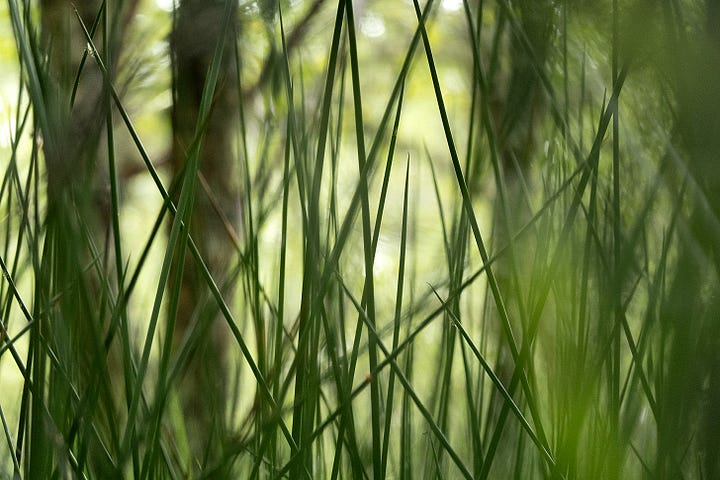
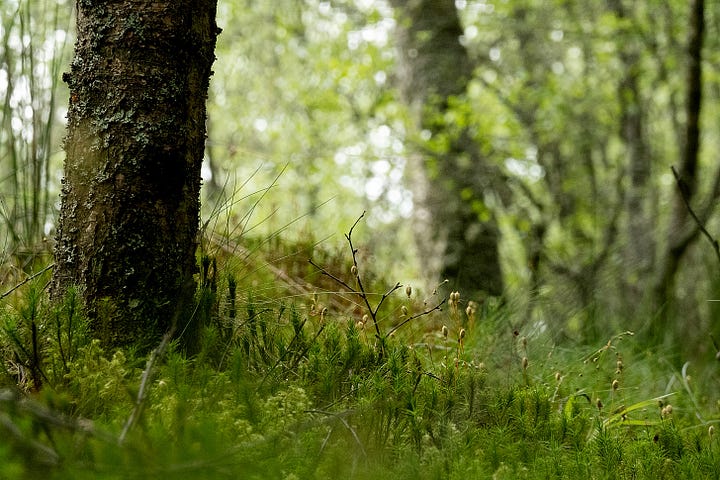
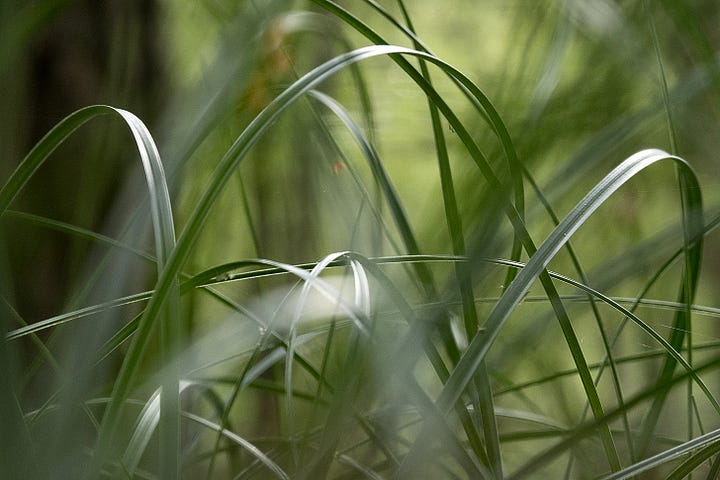
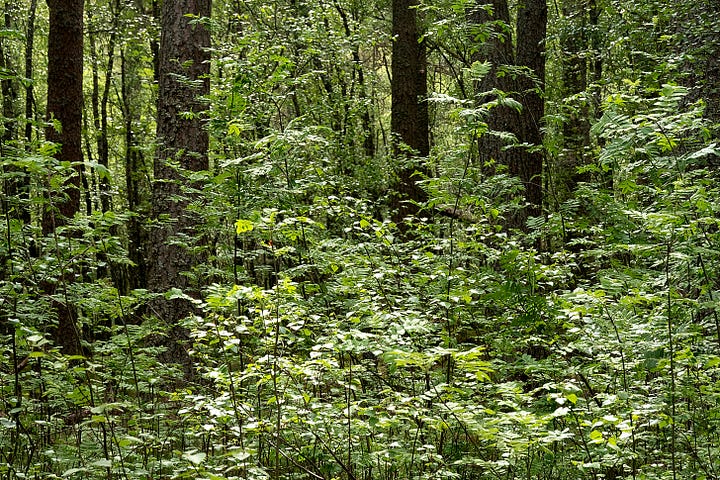
My walks now resemble some strange, distorted, Morse code: a garbling of dashes of movement and frequent stops. It's quite a change from the days when I'd rise early, propel myself up the nearest hill, wait for that moment when the sun just crested over the ridge and bathed the valley in first light. Now, I can hardly get out of the door before something will pull me to a halt. Sometimes I can predict what it will be, but even when I go out with images in mind, there will be other things down low. Look at the small and the world becomes very big indeed.
In the first couple of years here, I concentrated on the trees and then, as I walked, the less obvious routes. I found water, still reflections. I swapped from my macro lens to a small compact. For the trees it gave me compression, abstraction; for the water, 200mm close up threw in lines that bent, softness, pulled colour from the sky above, from the trees. And that was enough. In the summer, when they dried out, I find other things to do: working the garden, throw some ink around. But eventually that way of looking at water, working crouched down, translated into a different way of looking at place. In a sense, I found my own fairyland. And most of what I do now is limited depths of field, looking through vegetation. And so I never get very far before stopping.
I have a sentence on my website; it's probably still there. Like many photographers, I get so caught up in what I'm doing that the work of presenting photography gets left. It talks about water being a conduit for my vision, and my practice. At the time I wrote it some years into my abstract studies of light and movement close to my previous home in the Peak District I was very much thinking of water being a conduit for more water. And yet I can now see that it has continued to shape what I do. The water is still there in the form of fluidity—what I look at, the way that I choose to interpret it and present it, the nature of this place, half-land, half-water. My fascination with the movement of vapour in the sky and graphite sketches of clouds fringing the hills. And once you let curiosity lead, you never really know where it's going to take you.
A big part of curiosity and learning is ‘what if’? It stopped me just now, as I was about to start this, to bend down, look a little closer. I used to try to get everything right. I looked, and read, and practised views of the landscape. Even when it was details I’d abstracted, they were literal interpretations that succeeded or failed based on the quality of the light. It even took me quite a few years to realise that, to move beyond disappointment really. I stuck with film for quite a long time. I confess that, as anything other than an early adopter, I couldn't really see that digital would make my photography improve. I learned I was wrong when I did stop by the river. It wasn't just the freedom from the constraints of 24 or 36 exposures, or even fewer on medium format. It was the fact that I could experiment with different shutter speeds. At the outset, it was a simple case of not knowing the right shutter speed. Isn't there an irony in that? So I tried different ones, and I found that so many different interpretations were possible. I learnt that it's better to fail, to get things wrong, and that that is where the real learning begins. And here I must stop again; something else has caught my eye.
It's the sort of scene that would have drawn me before. Wood sorrel leaves growing through a mound of sphagnum. Lovely contrasts of colour and shape. I begin by looking at it from above, but I can't do it justice. It's too literal for me. So I'm back down, crouching. And that's where I find my magic, at least until the midges find me. It may be 7m/sec outside the wood, but in places the air is still enough. Eventually they will move me on, but that's okay. I'm a lot more relaxed now about where these take me, whether I even end up with anything. As soon as I go out looking for photographs, bringing expectation, it all falls apart.
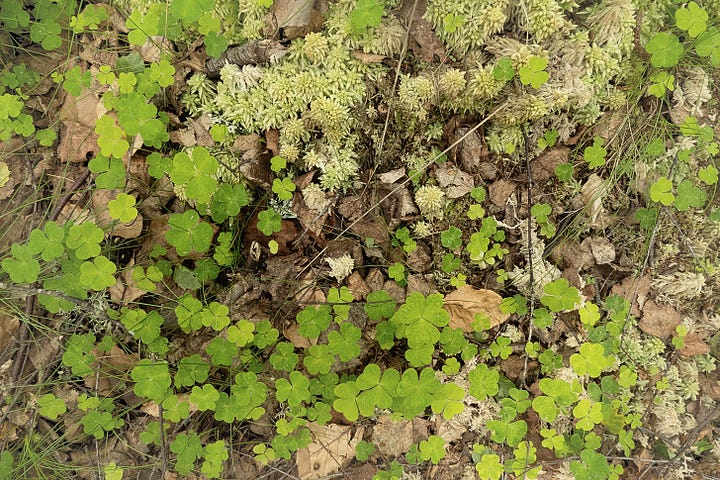
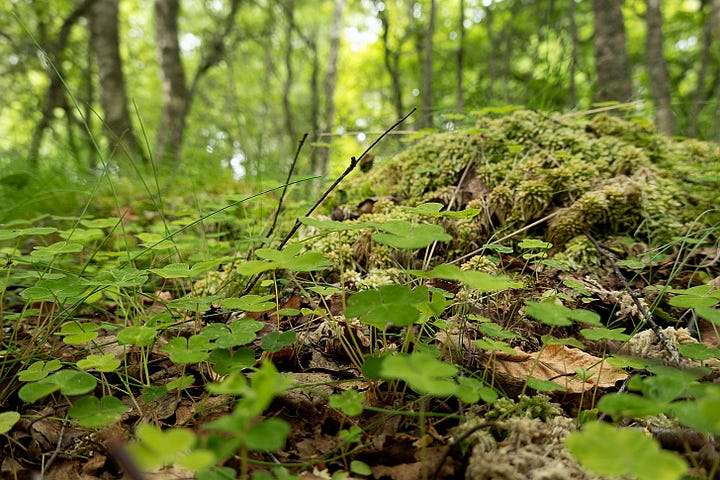
The green heart of the wood is full of leaf, and fledglings calling for food, sounding a little rusty, in need of lubrication. The wind finds me, and the sound of dogs on a distant croft.
Tree creepers, and great spotted woodpeckers. It's time to move on. And the other thing that has, undoubtedly, helped me to learn to see, to develop a more personal. style of image is returning to the same small places. Nine years by the river; they were very small places indeed, but water is always so different. Here, I do have more choice, and yet I still find myself circling the moss, being pulled in by the threads of deer paths. There's more than enough here to keep me happy, to learn about this place and undoubtedly I quickly began to put down roots. I haven't yet really worked out why there is this need to feel attached to place. A sense of home, a grounding, I think. A place that I can always come out to and find something, however small, that shifts the needle on the day.
And when the sands around us continue to shift seemingly on a daily basis I know, as far as any of us can be certain of anything, that I can come back here and lean into curiosity and ‘what if’s down low to the ground, and lose myself in a little of nature's magic. And when I return, I will be refreshed. A little better balanced with a few memories, a few photos, some rambling thoughts, to hold on to until the next time.
Until next week,
I hope that this week’s letter has brightened your day a little; I appreciate each and every like, comment and share. A lovely way to say ‘thank you’ is to make a small donation here. To those of you who have, my heartfelt gratitude.
PostScript
I’ve been trying to find a way of photographing those arctic starflowers that gives you an idea of the impression that they make together. Amid all the green it’s been difficult to show them to effect; this is as close as I’ve managed. By converting the image to black and white and reducing the exposure, they do now seem a little more like the stars in the night sky.
Words and images copyright © Michela Griffith 2025 except where otherwise credited






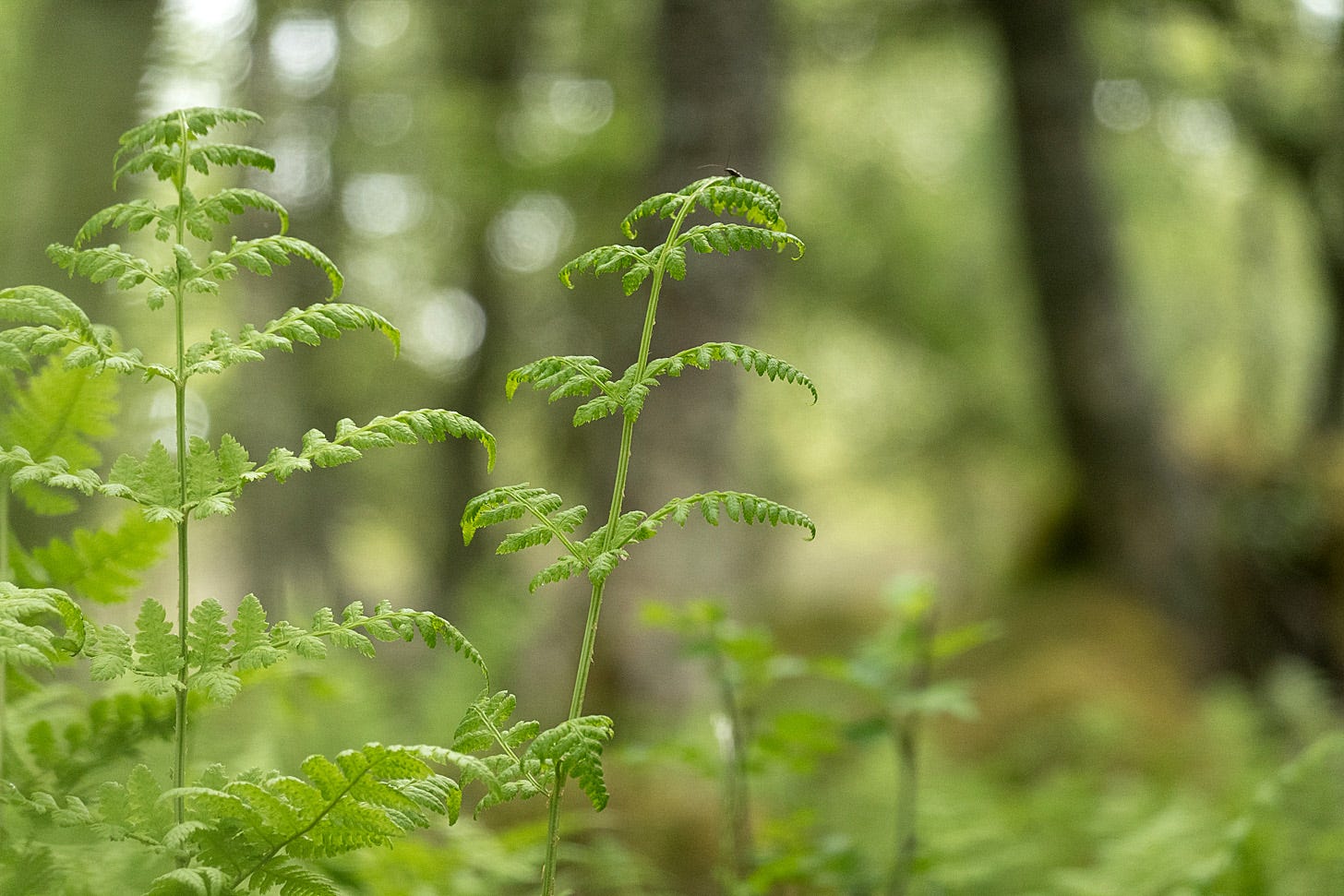
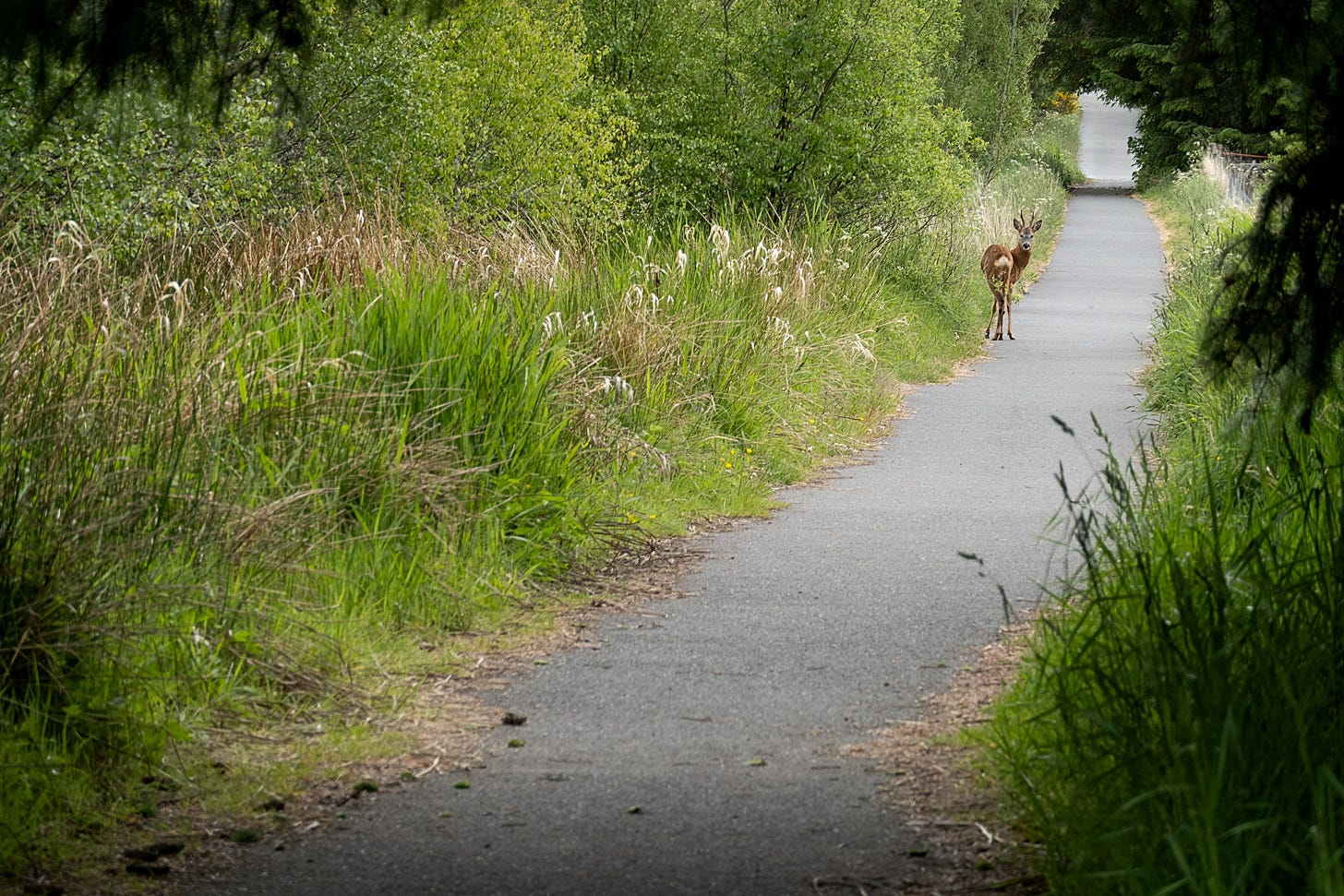


That was lovely to hear today, I closed my eyes and listened, allowed my mind to wander with you on your walk. As I’m confined indoors, you took me to your outside, and it was a perfect tonic- thank you:)
They do look like stars so lovely! Beautiful post as always and great images Michela.